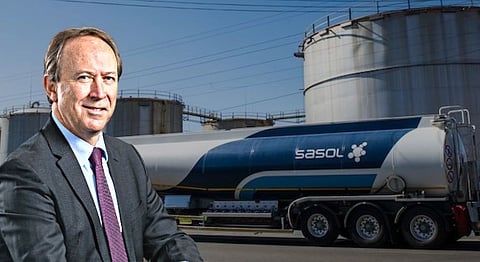Sasol’s comeback confirmed in FY22’s numbers – 20-bagger does a Lazarus since despair of March 2020
Two years ago SA's fuel-from-coal and chemicals champion Sasol was selling off assets to urgently raise cash – and preparing to ask shareholders for a $2bn bailout. Today the business released financial results for the year to end June which reveal a business back in rude health, one that declared a dividend, cut debt and looks well set for the future. In this interview, CEO Fleetwood Grobler shares valuable lessons learnt from the near-death experience – and how different life is for the 'twenty bagger' whose share price peaked above R420 in May – having fallen to just above R20 two years earlier. He spoke to Alec Hogg of BizNews.
Fleetwood Grobler on Sasol's position in 2020
Yeah, I think I think what you have to bring into the equation is that, you know, we had a very precarious situation, but we had a very strong management team that, together with the board, took some decisive measures to put that into place. Right early on, I remember the first SENS that we put out after the oil price went negative. That was on the 17th of March 2020. And then we called that we will do this amount of saving, we will do that divestment approach in terms of assets that are nonstrategic, and we will go into a transformation program to make those savings sustainable.
And I think that for us was the big difference to a normal, you know, headwind that you will get. You were really so focused on that commitment that everyone made to say, 'This is the plan and that's what we're going to do.' And we basically worked 24/7 for a long time to get that plan on the road. And we are very fortunate that team Sasol really embraced that and that we delivered on that plan.
On why Sasol had to hedge while the oil price was going up
I think that's a very important issue to address, because when a company is sinking a meter every second down the waterline or below the waterline, you have to take drastic measures to protect your bank balance sheet because the banks are getting in control of your company and you need to have the shareholders in control. So what do you do? You need to get that balance sheet in health. Now, one of the biggest risks to any balance sheet is that you don't generate the cash flow to service the debt or to pay dividends as we were at that time. And therefore, we had to pull all levers to mitigate risk. So, one of the levers that we pulled was to hedge on the downside of oil. And we didn't have the means to go and put options to just say, 'Okay, we hedge on $60 and it would cost us $3 nett to get to that point, because we didn't have the cash flow. So we went for zero cost collars.
So, it was in the range of 58 to 68, some of it we got up to 72. So, you earn the money in that range, but you've got the protection on the downside because our balance sheet couldn't stomach any downside pressures. That's why we started this divestment program of assets, why we undertook all the austerity measures, why we introduced the Sasol 2.0. And therefore, this was just another instrument to protect the downside. And you don't do it on the day. You hedge out 12 months ahead of you so that you can get the market whilst it's still, you know, palatable. But yet, you covered the risk that you don't scramble in the last quarter to go and manage it. So our hedging program is really progressive.
On Sasol having now declared a dividend
Our shareholders have been very patient with us. But I think the reason that they tolerated this nonperformance from their perspective was that they understood the predicament in an unfolding of events from 2010 from 2020 when it started to this point when we declared the dividend. So, I do think they've got empathy for how it developed and they've also really joy now that we've delivered on that outcome. So, that's the story as it unfolded.
Read Also:

